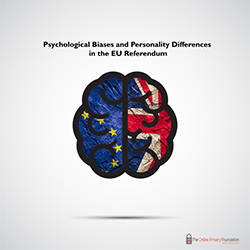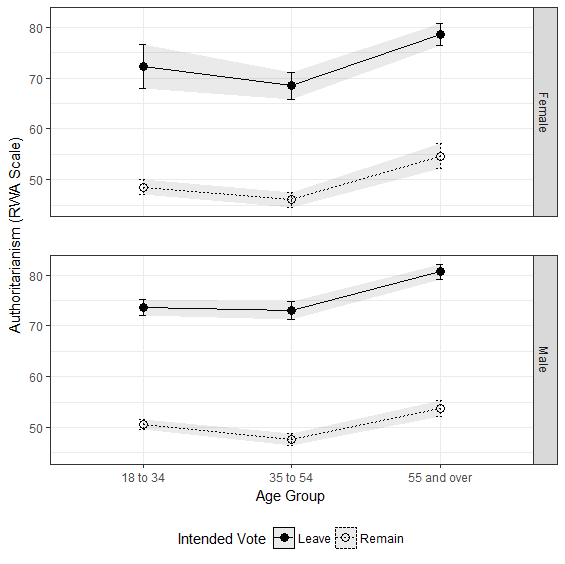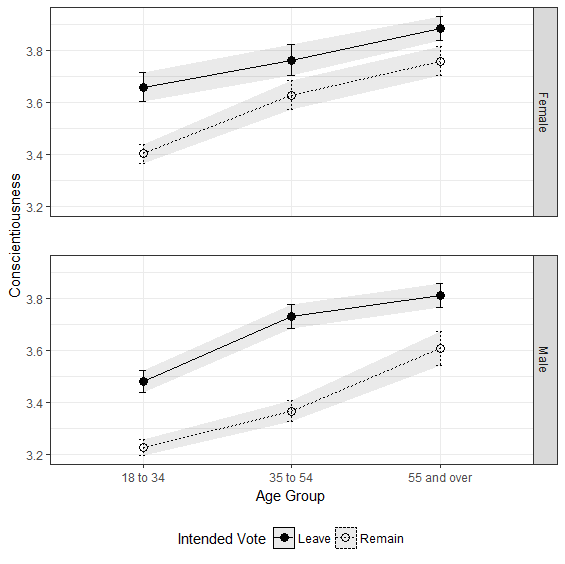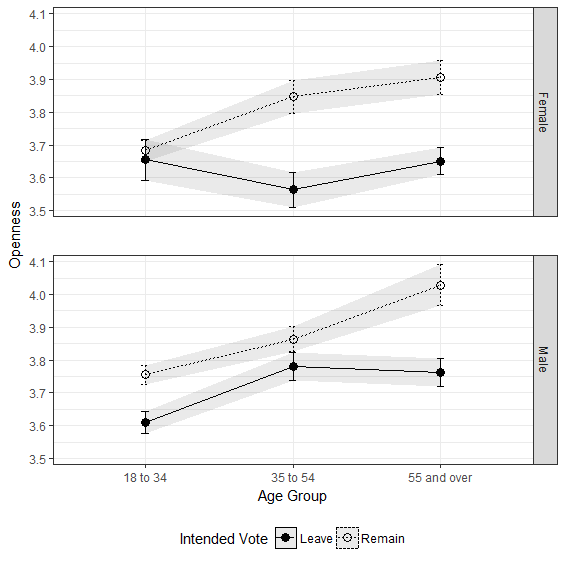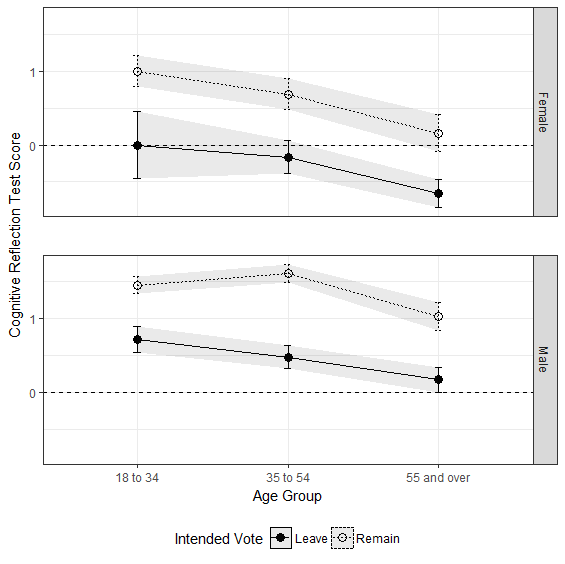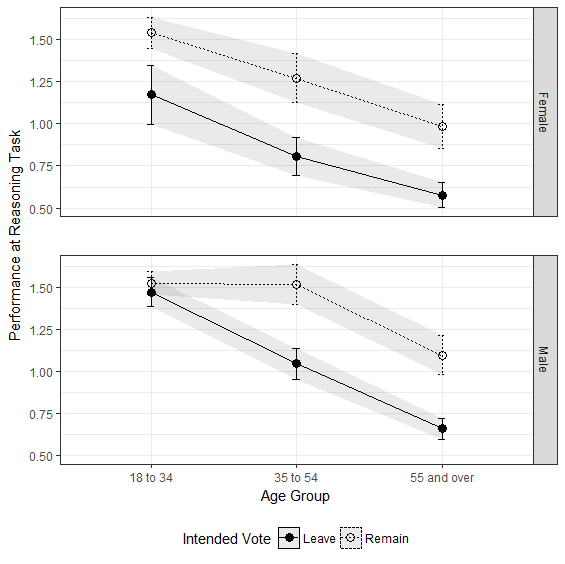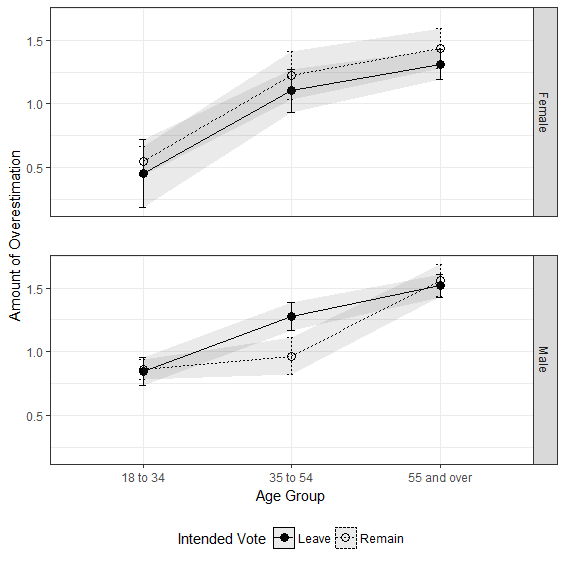NOTE: An updated version of this page is available here. The updated page contains links to a comprehensive working paper.
The Role of Personality, Authoritarianism, Numeracy, Thinking Styles and Cognitive Biases in the United Kingdom’s 2016 Referendum on European Union Membership
This version was first published on 26th April 2017.
Between April and June 24th 2016, we conducted six studies in relation to the UK’s referendum on EU Membership and previously shared preliminary results here. In this article, we provide an update, with the final results scheduled to be written up in a paper and submitted to a journal or conference.
Introduction & Background
The United Kingdom’s 2016 referendum on European Union (EU) membership was one of the most divisive choices presented to its electorate in a generation, yet relatively few papers have explored the roles personality traits and authoritarianism play in relation to public support for European integration. Furthermore, and in the same context, no prior research exists that examines the role of numeracy, thinking styles and cognitive biases including ideologically motivated reasoning, framing and the Dunning-Kruger effect. These are important considerations given the extent of misinterpretable and arguably misleading numerical information published in the run-up to the vote and the high proportion of adults in the UK with low numeracy skills. The present research captured responses to both self-report questionnaires and controlled experiments delivered via 6 web-based studies with a total of 11,205 participants. Differences in personality traits, levels of authoritarianism, numeracy and thinking styles were assessed with validated self-report questionnaires, while participant’s susceptibility to cognitive biases were assessed using controlled experiments.
Personality Differences
Participants expressing an intent to vote to leave the EU reported significantly higher levels of authoritarianism and conscientiousness, and lower levels of openness and neuroticism than voters expressing an intent to vote to remain.
Differences in Numeracy and Thinking Styles
When compared with Remain voters, Leave voters displayed significantly lower levels of numeracy, reasoning and appeared more reliant on impulsive ‘System 1’ thinking. In all three areas, older voters performed significantly worse than young voters intending to vote the same way.
Numeracy

Graph showing Berlin Numeracy Test results with Remain voters achieving consistently better results. Note the effect of age on numerical literacy.
Susceptibility to Cognitive Biases
In the experimental studies, voters on both sides were, for the most part, found to be similarly susceptible to the cognitive biases tested, specifically ideological motivated reasoning, framing and the Dunning-Kruger effect.
Ideologically Motivated Numeracy
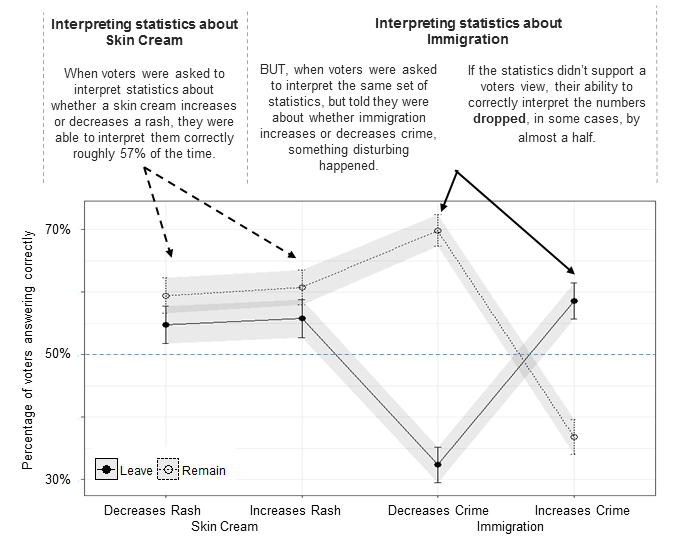
Graph showing effects of Ideologically Motivated Numeracy. showing that a voter’s ability to think rationally about the evidence for a referendum topic distinctly depends on whether or not that evidence supports their existing views. The study replicated research by Yale Professor, Dan Kahan and observed the same phenomenon. Kahan’s research was dubbed ‘The Most Depressing Brain Finding Ever’.
Framing
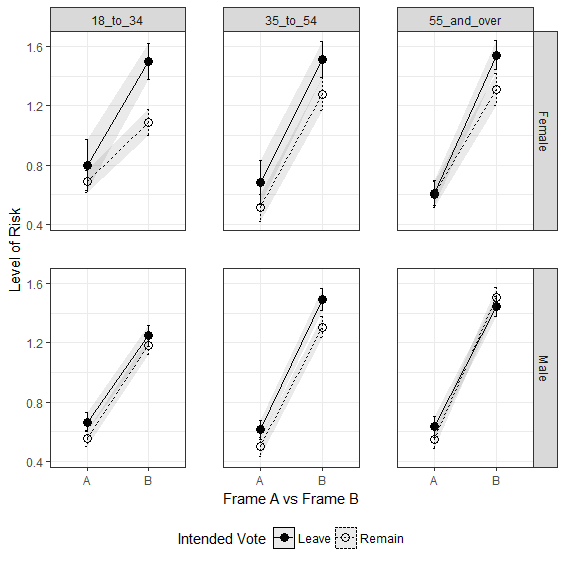
Graph showing voters tendency to choose the riskier of two options (A and B), depending on how the choice is presented. In this case, when the choices are presented in terms of lives or money saved, participants tend to prefer the secure program (A). When the choices are presented in terms of expected deaths or financial losses, participants tend to chose the gamble (B).
Preliminary conclusions
These results raise important questions regarding the use and framing of numerical data for public consumption. Not only do many voters lack the skills to critically evaluate the numerical data which is being presented, their inherent biases clearly influence the way in which they process information. In the context of European integration, it is a plausible conjecture that these biases are significantly influenced by differences in authoritarianism.
Next Steps
We are currently working through the completion of a formal paper.
Contact chris@onlineprivacyfoundation.org for further information and/or if you have any feedback.
Notes:
Line charts versus bar charts: We have received two comments on the use and appropriateness of line charts versus bar charts. As we work through the completion of the formal paper we will take these valuable comments in to consideration. If readers have further comments, please do not hesitate to get in contact.
Groups versus individuals: In interpreting these results, it would be easy to conclude that Leave and Remain voters are polar opposites. When we talk about differences, what we really mean is that the “average” or “typical” Leave voter is different than the “average” or “typical” Remain voter. This is a true statement when talking about Referendum voters as a whole, but it can’t accurately be applied to individual voters.

